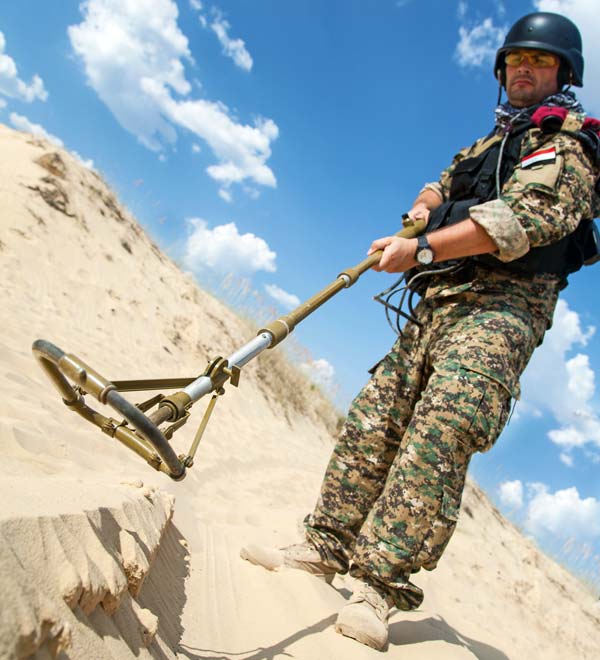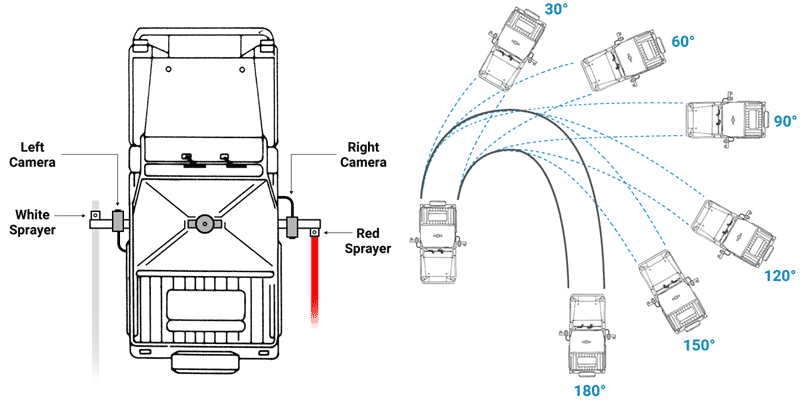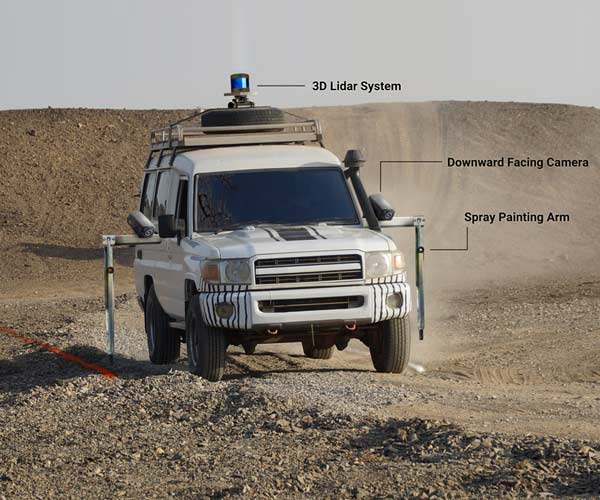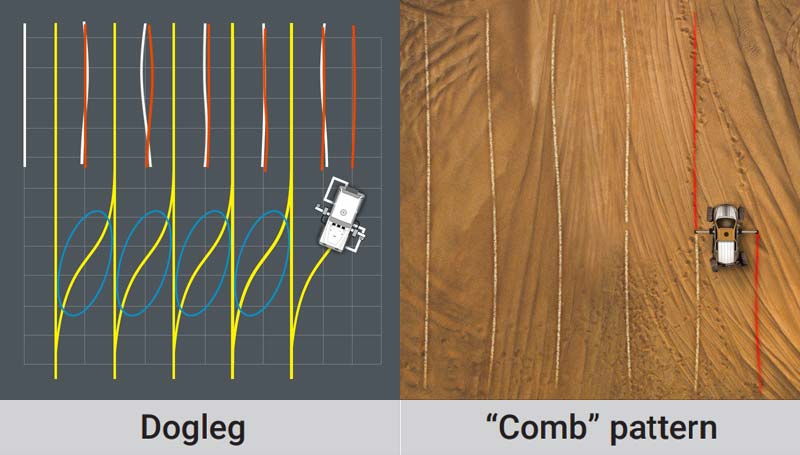Overview
 According to United Nations and the International Campaign to Ban Landmines(ICBL), there are an estimated 50 million-plus landmines in more than 60 countries that results in 10,000 deaths and 20,000 injuries every year (lan, 2017). Landmines are typically planted in unstructured environments in rural areas, hillsides, etc. The cost of clearing landmines is very high but is necessary as it involves lives and causes horrific injuries every year.
According to United Nations and the International Campaign to Ban Landmines(ICBL), there are an estimated 50 million-plus landmines in more than 60 countries that results in 10,000 deaths and 20,000 injuries every year (lan, 2017). Landmines are typically planted in unstructured environments in rural areas, hillsides, etc. The cost of clearing landmines is very high but is necessary as it involves lives and causes horrific injuries every year.
The landmine clearing process involves marking an area that has been detected and landmines removed to declare the area to be safe. The traditional manual labor landmine detection and clearing are extremely dangerous and time-consuming, thus the ability to deploy autonomous robots to replace human labor seems like an obvious choice. With the need for direct visual indication of landmine processed regions, what better ways than to send in an autonomous robot that can detect and mark the scanned area with red and white paint lines, according to United Nations convention.
Problem-solving
Autonomy
The proposed vehicle needs to be autonomous. It also needs to detect and mark the landmines. The markings shall be consistent with United Nations’ conventional white (safe) and red (danger) paint markers.
Line detection in all weather/ conditions
The vehicle needs to be deployed into a general area of interest via pre-determined satellite images with cameras and a paint sprayer mounted on the left and right of the vehicle. The vehicle is restricted to scanning even terrains due to its wheel mobility. As the vehicle moves through the area, the magnetic detector mounted in front of the vehicle scan for landmines hidden under the ground.
Maneuverability to “comb” sweep-scan the area
When making a u-turn, vehicles have a minimum turning-circle radius circumference that may result in a distance or gap (less dense scanning area). And sometimes the scanning area just doesn’t have the room for such maneuver.

Problem-solved

Autonomous vehicle
With Neousys computer offering various connectivity, autonomy can be achieved by installing Lidars, sensors and cameras. The autonomous landmine clearing vehicle can then be deployed into the field, scan and mark the desire scanning area with red/ white paint to indicate if the area is safe or requires landmine deactivation units.
Line detection, forward/ reverse tracking
With an abundance of USB and PoE connections, the vehicle can connect to a variety of camera choices for its downward facing camera to enable back-tracking scanning. Designed to detect ridges of a particular known line color (red or white), the challenge here is similar to most outdoor image processing applications, the variable lighting conditions (shadows, low, overcast or excess sunlight, etc.) so the choice of the camera may be of importance.
Scan area in comb pattern (better density)
The vehicle drives to the far edge of the region, retraces its path in reverse, before driving across to the next lane in what we will refer to as the ‘dogleg’ maneuver (circled in blue). This is done so to avoid the gaps created from the turning circle. This pattern is repeated for each ‘lane’ that is scanned, as shown below.

Benefits of Neousys Embedded Computers
Neousys rugged embedded platforms offer the following advantages:
Environmental
- IP67 water/ dustproof GPU computer
- Extreme rugged computers for extra volatile environmental conditions
- Shock and vibration proof for in-vehicle use
- True -25°C up to 70°C wide-temperature operations for harsh, volatile environments
- Patented Cassette design for segregating thermal/ electrical interference
- Tri-axis tested patented damping bracket to withstand shock and vibration conditions
- Ultra-compact VTC systems to fit into tight spaces
Connectivity/ expandability
- PoE+ connectivity for GigE cameras
- USB3.1 Gen1/ Gen2 connectivity for USB cameras
- Connection ports with screw-lock for rugged connectivity
- WiFi 6/ WiFi 5/ 5G/ 4G wireless communication, expansion via mini-PCIe module
Inference processing power
- Support up to dual NVIDIA RTX 30/ 20 series graphics cards
- Support up to NVIDIA® RTX 30/ 20 series graphics cards
- Support up to NVIDIA® Tesla/ Quadro inference accelerators
Electrical
- Patented SuperCAP UPS to counteract unforeseen power interruptions
- Wide-range DC input
- Configurable intelligent ignition power control










